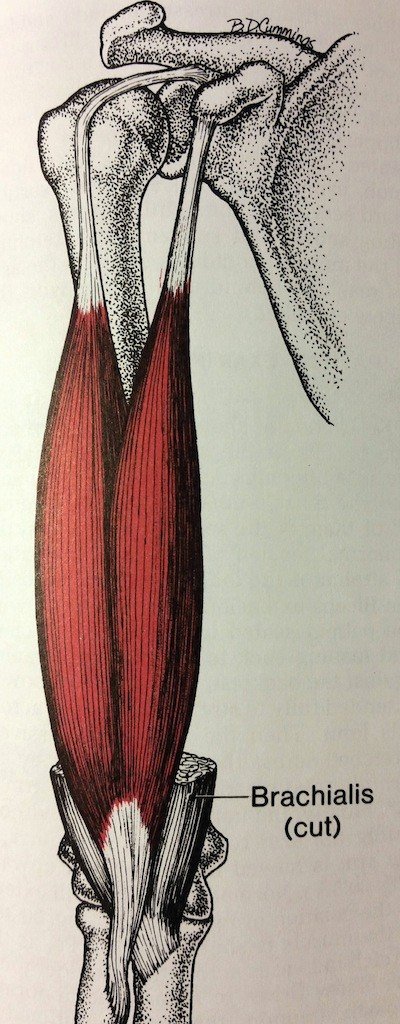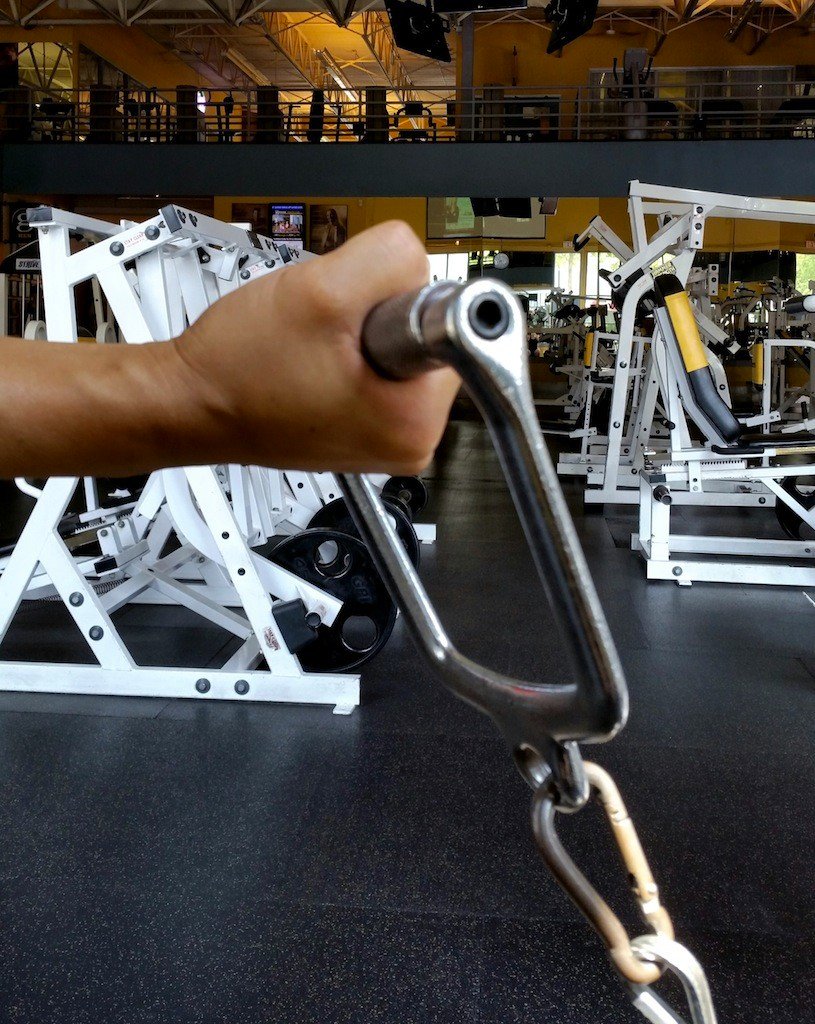
This is an aside to explain the physiology of the article Weight Train Once a Week! It’s a further explanation of how we came up with The Ten Principles of The WOW Method. As well, it will help you to understand why you only need to weight train once a week.
The Physiology Of Weight Training | Why Weight Training Once A Week Works!
- Training to complete muscular exhaustion ensures that you’ve exhausted all the muscle fibres in that particular muscle group (see “Henneman’s Size Principle“).
- By exhausting all the muscle fibres in that particular muscle group, you’ve stimulated each and every fibre to build new contractile units over the next week.
- The muscles actually need 6 – 7 days to recover completely. Training them more often interferes with the recovery process and causes inflammation.
- New contractile units in each and every muscle fibre equates to stronger and bigger muscles!
(Note: The following explanation of physiology has been greatly simplified out of respect for the layperson’s time.)
Muscle Physiology

The human body is made up of cells. Muscle cells are called muscle fibres. They are long, thin, cylindrical, and run the entire length of the muscle, attaching to tendons at either end. (Tendons connect muscles to bones.)

Let’s focus on your brain sending a signal to your bicep. The bicep has many motor units. Not all of them will be sent a signal simultaneously.
A motor unit = nerve + hundreds (or thousands) of muscle fibres — depending on the muscle.
Thousands of microscopic contractile units that act together to contract the muscle fibre. Many muscle fibres act together to contract the muscle, thereby lifting the dumbbell.
A Set Should Continue Until Complete Muscular Exhaustion

Repetition (rep) is the controlled lifting and lowering of the weight through the full range of motion. Set consists of several repetitions without resting in between.
Complete Muscular Failure or Exhaustion means to continue performing repetitions until momentary muscular failure where you’re still trying to lift the weight (eg. bicep curl), but the arm will no longer move because all motor units have been exhausted.
Note: It is not absolutely necessary to lift to the point of complete muscular failure, it’s just the most efficient way to gain strength and size.
Henneman’s Size Principle: states that under load, motor units are recruited from smallest to largest. This means that slow-twitch, low-force, fatigue-resistant muscle fibers are activated first. Then fast-twitch, high-force, less fatigue-resistant muscle fibers are activated second.
During a weight training set, the smallest (slow twitch) motor units are recruited first. As the set progresses and you continue your reps, more and more motor units are recruited to continue lifting and lowering the weight.
Slow Twitch Motor Units are comprised of a nerve attached to many slow twitch muscle fibres. These fibres fire slowly, therefore can maintain continuous muscle contractions over extended periods of time.
Then comes that point during your set when it becomes very difficult to continue lifting the weight. This is when the largest (fast twitch) motor units are recruited.
Fast Twitch Motor Units are comprised of a nerve and many fast twitch muscle fibres. These fast twitch fibres fire rapidly, therefore fatigue quickly.
Taking the set to complete muscular exhaustion ensures that you’ve exhausted all the muscle fibres (both slow twitch and fast twitch) in that particular muscle.
This is why the last few reps before muscular failure are the most important!
To ensure each muscle fibre has been exhausted (and therefore stimulated) your repetitions should be at 14 – 20 by complete muscular failure.
Exhausting Muscle Stimulates the Fibres to Build New Contractile Units.

Think of a long rowboat with lots of rowers. After a workout, the boat is ripped down then built back up bigger and stronger with more rowers!
The same with muscle. Each muscle fibre is ripped down and built back up with more contractile units.
New contractile units in each and every muscle fibre equates to bigger and stronger muscles!
Muscles Need 6 Days to Recover Completely.
Training your muscles more often will interfere with the physiology of the recovery process. This causes inflammation and eventually, injury.
The building of new tissues within the body can only happen at a set rate. At this set rate it usually takes a full six days to:
- Dissipate the fatigue and inflammation.
- Repair the tears in the muscle fibres.
- Build new contractile units within the muscle fibres.
- Strengthen the tendons, ligaments, fascia and bones, so they are strong enough to support the stronger muscles.
Even if a week seems like a long time, rest assured, you will not lose muscle (unless you diet).
To recap: Weight train each muscle group to failure. This stimulates all muscle fibres to build new contractile units over the next week. This will give you stronger, larger muscles without inflammation.
Credentials
Evidence based research has become so de rigueur that every theory of physiology is expected to be based upon it. However, we can’t help but notice that with just a bit of research on Google, any theory of physiology can easily be either proven or disproven.
I’ve included several studies, or articles based upon studies. However, The WOW Method (created by LEONG Orthopaedic Health) is mostly based upon the last twenty five years of results with our clientele.
- Strength Training Methods and the Work of Arthur Jones
- Strength Training for Health and Longevity with Doug McGuff, MD
- Comparison of once‐weekly and twice‐weekly strength training in older adults
- Recovery after heavy resistance exercise
Personal Training
By appointment only. Please email:
LeongOrthopaedicHealth@gmail.com
– LEONG Orthopaedic Health
If you like this article, please share it!
All rights reserved; no part of this publication may be reproduced or transmitted by any means, electronic, mechanical, photocopying or otherwise, without prior permission. Copyright 2015.